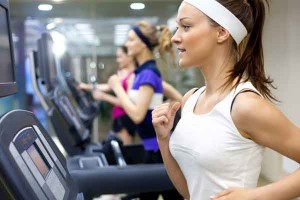Regular activity is very vital for good health and is especially much important if one is trying to cut off excess weight or to maintain a healthy lifestyle and healthy weight levels. More body activities are needed when one intents to loose weight. The reason behind this is that physical activities increase the amount of calories your body uses for energy. The burning of calories through physical activities together with reduced amounts of calories intake creates caloric deficit that results in weight loss.
Accelerates Burning of Calories
According to latest weight loss news & tips most of the weight loss occurs due to reduced caloric intake. However, evidence shows that the only way to lose drastically is to get engaged in regular physical activities. Regular physical activities can also reduce the risk of cardiovascular and diabetes apart from weight loss. Physical activities also help reduce high blood pressure, minimizes chances of contacting type 2 diabetes, heart attack and several forms of cancer. They also reduce the risk of arthritis, pain and associated disability, reduce the risk of osteoporosis and also minimize symptoms of depression and anxiety.
Weight loss activity has for a long time been confused with a pack of myths that have no scientific proofs behind them. However, there a few tips that are mainly based from scientific findings by some of the world’s most qualified scientists and have been rated with positive implications towards weight loss approaches. This is a high time to dawn light broadly to everyone that regular exercises works out perfectly with the combination of the following latest weight loss tips. Here are some of the latest lifestyle news and tips for weight loss that are worth trying:
- Drink much water prior to mealtime
This is an open truth and for real drinking water before meals works out perfect to enhance weight loss. One boosts metabolism by 24 to 30% over a period of 1 to 1.5hours by drinking water. This helps in burning excess calories. Drinking water about half an hour before meals helps dieters eat fewer calories and loose approximately 44% more weight.
- Consume protein-rich breakfast
Apart from nutritional benefits that one gets by eating eggs, it also helps him/her lose weight. Numerous studies have found that replacing a grain-based breakfast with eggs help you eat fewer calories for the next few hours. You will also feel satisfied for the better part of the day before main meals. Won’t this prevent you from reaching out to unhealthy snacks? This helps one lose more weight and body fat. If at all you can’t eat eggs at all, any source of quality protein for breakfast can tickle out the trick.
- Make black coffee your favorite beverage
Coffee has been unfairly demonized over years and for real quality coffee is loaded with antioxidants that that contains lots of health benefits. Research shows caffeine in coffee can boost metabolism by 4-10% and thus increase fat burning up from 15-30%. However, it is recommendable to avoid using too much sugar because it is rich in calories which can completely negate all the benefits you may expect from the coffee. In addition, taking green tea also works out in a similar way as coffee since it contains some fractions of caffeine that works in synergistic ways to enhance the burning of excess fats. It can be taken either as a beverage or green tea extract supplement.
- Use coconut oil in all your meals
Coconut oil is very healthy and its high in special fats called medium chain triglycerides which are metabolized differently than other fats. One should replace his/her current cooking oil with coconut oil and this will boost metabolism by 120 calories per day, reduce appetite to the extent that you start eating 25% fewer calories per day.
- Take supplements
In reference to online publications of the latest lifestyle news and tips, supplementing has always been an option for those who can’t have access to balanced diets that are rich in minerals and essential nutrients. There are many supplements that are rich in fiber, which helps to absorb water and sits in the gut for long hours, making you feel fuller and helping you eat fewer calories.
Additional Tips
In addition to the above factors, one should also cut on added sugar, eat less refined carbs by switching to a low carb diet, exercise portion control or count calories, keep health food around in case he/she gets hungry and above all, use smaller plates that makes you get used to eating small amounts of food. This will ensure that you are burning more calories than you eat.
Conclusion
Excess weight comes about as a result of poor eating habits that result in excess calories. No one enjoys it when he/she is reading overweight. This makes him or her uncomfortable and this limits the social life that one lives. Therefore, for comfort, regular exercises and better eating habits help one to live a healthy and happy life.
References




